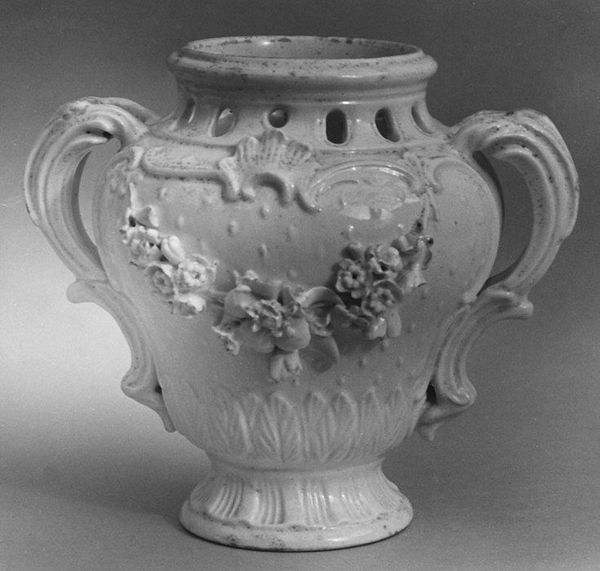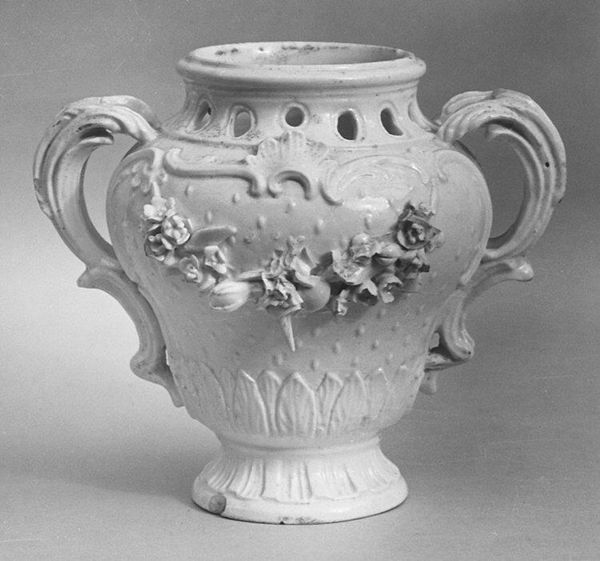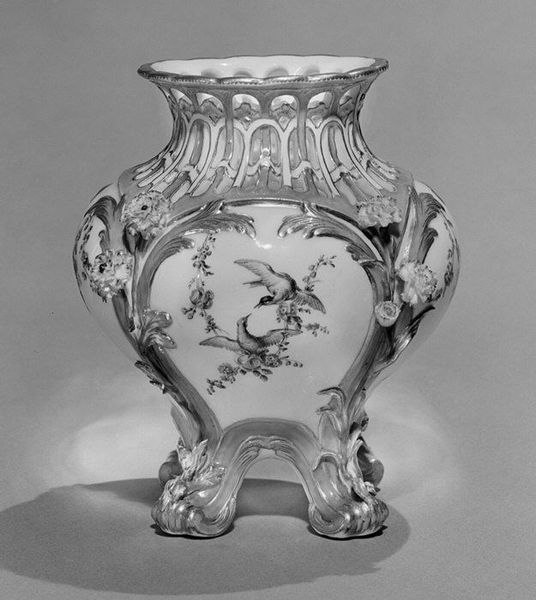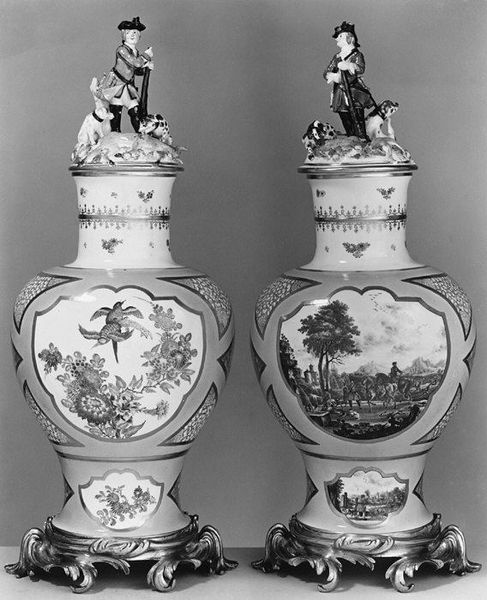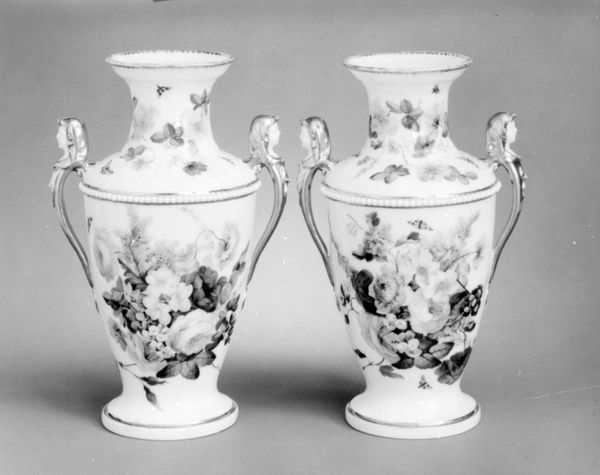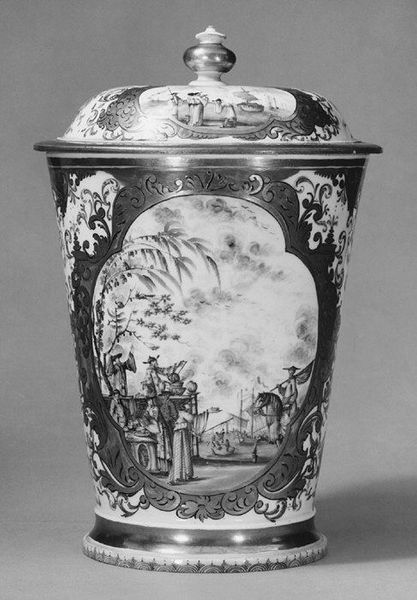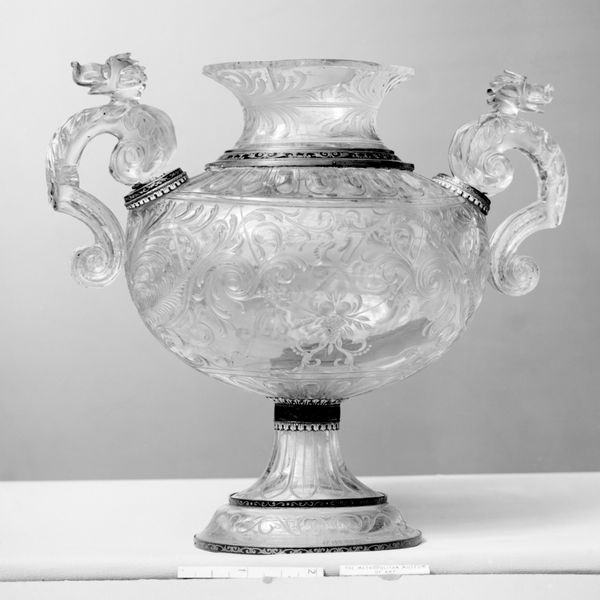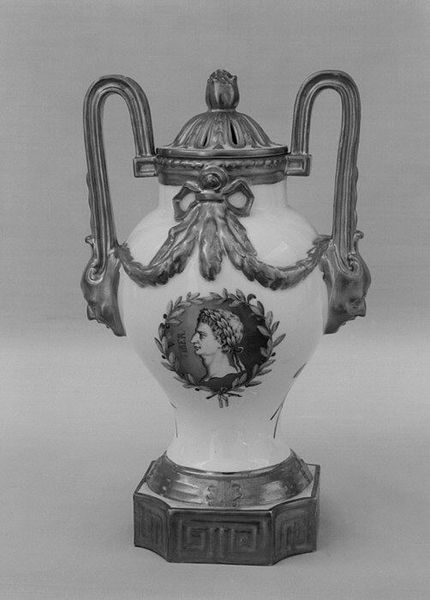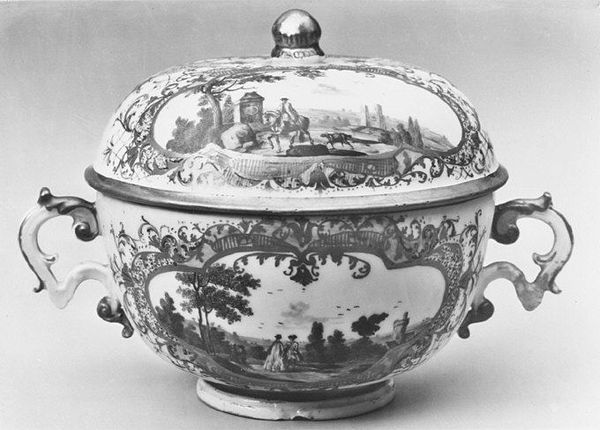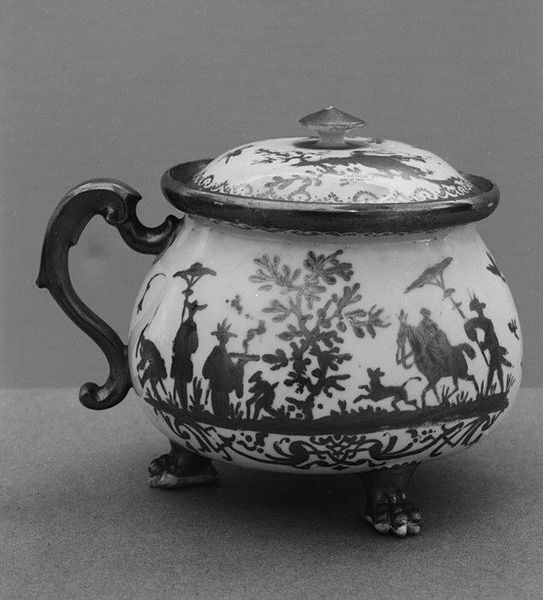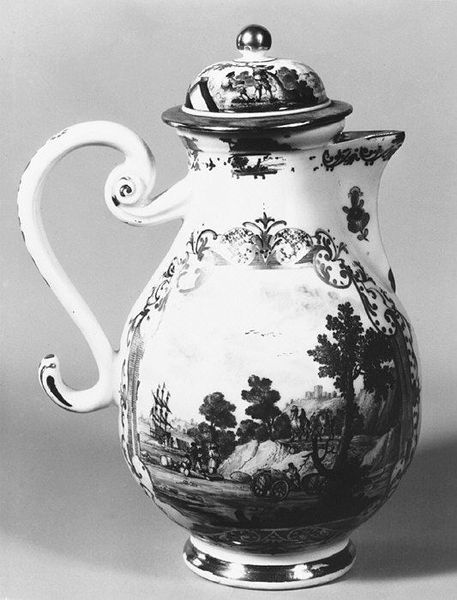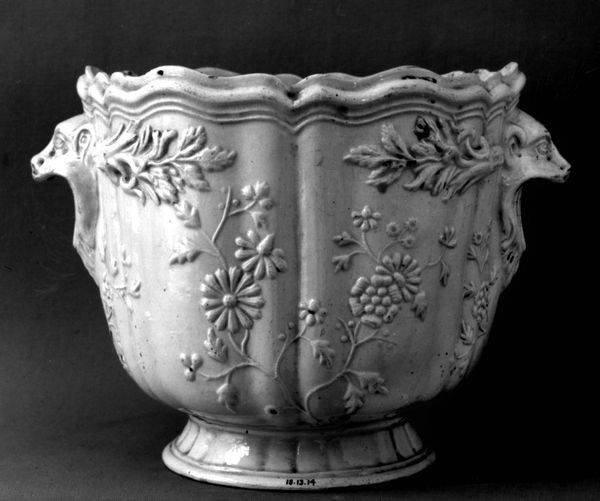
painting, ceramic, porcelain
#
painting
#
landscape
#
ceramic
#
porcelain
#
figuration
#
decorative-art
#
rococo
Dimensions: Height: 4 3/4 in. (12.1 cm)
Copyright: Public Domain
Curator: What strikes me first about this piece is its starkness. The monochrome painting against the pristine white porcelain is so arresting. Editor: This object, simply entitled "Vase," was crafted between 1755 and 1775 by the Doccia Porcelain Manufactory. We can locate it today at the Metropolitan Museum of Art. But what readings can we derive from this...starkness, as you put it, within its historical context? Curator: For me, the color scheme reads like a document or an official pronouncement. Combined with the imagery, it evokes the relationship between power, land ownership, and visibility during the late 18th century. Whose land is pictured, and who could afford this decorative object? Editor: An interesting perspective, definitely. Looking at the vase more formally, the smoothness of the porcelain draws attention to the painting technique. Notice how the landscape is meticulously rendered; its symmetrical composition really commands attention. The landscapes offer these calm, almost idealized views of nature and habitation. The handles—shaped like stylized faces—add an anthropomorphic element, unsettlingly observing us. Curator: Yes, these features definitely contribute to the overall narrative the vase conveys, its intersectional representation through ownership and craftmanship. While seemingly ornamental, vases such as this may have signified to its contemporaries control over land and access to power for its owner. These landscapes offered, perhaps, an idealized view of this power at a time where revolution was brewing in the Americas and Europe. Editor: This tension—between surface beauty and latent sociopolitical commentary—highlights how even everyday objects become vessels for understanding broader cultural forces at work. Thank you, I’m keen to seek further interpretations around that today. Curator: The visual analysis, coupled with the socio-historical background, does reveal intricate aspects of the artwork and the era it emerged from. It allows us to reflect how everyday objects reflect control and conflict.
Comments
No comments
Be the first to comment and join the conversation on the ultimate creative platform.
